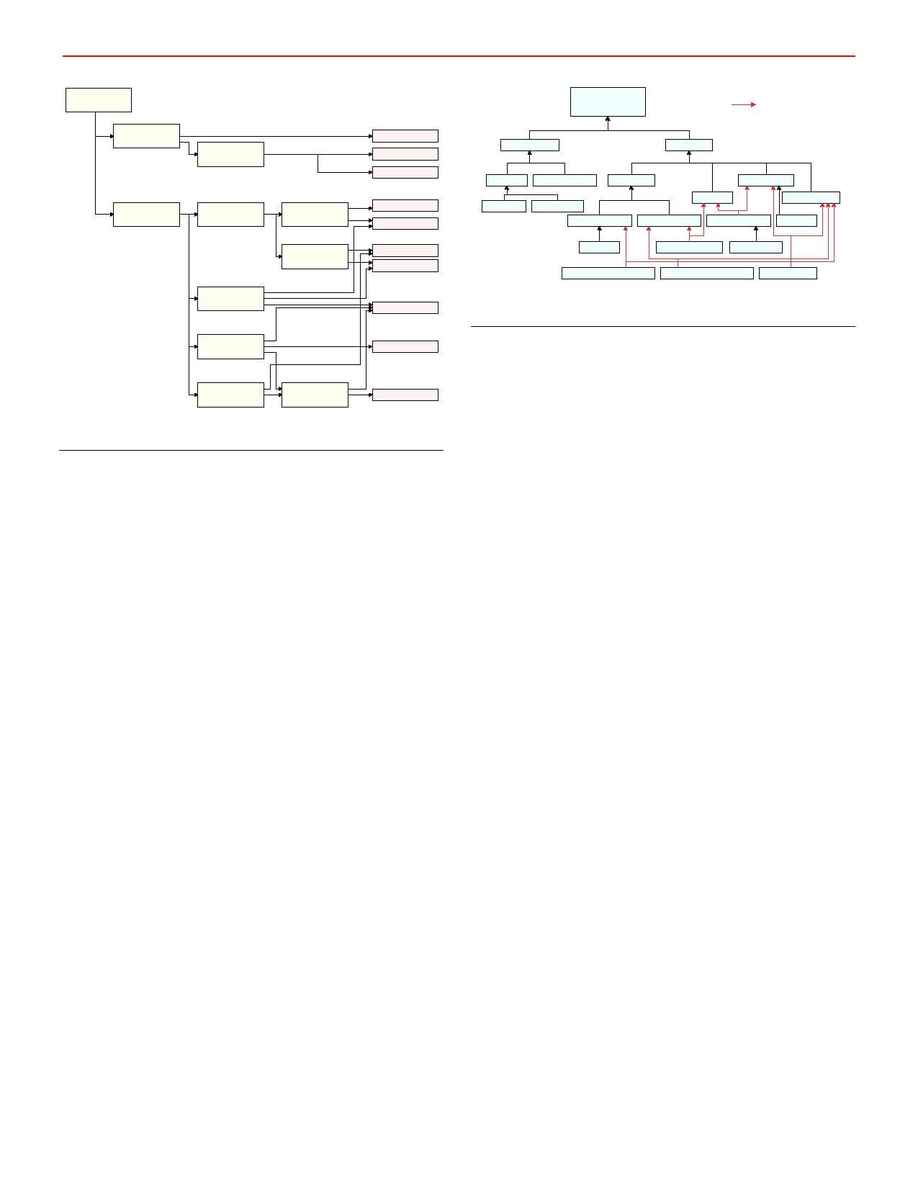
B.
VLBI
II. Radial (timing)
A. Doppler observations
1. Oneway
a. Pulsars
b. Spacecraft
2. Twoway
a. Radar
b. Spacecraft
B. Time delay observations
1. LLR
1. Radar
a. Differential radar
b.
Radar closure
2. Spacecraft
a. Single
b.
Multi
For reasons having mainly to do with datasets that are cur-
rently insufficiently large or insufficiently accurate to have a
substantial effect on ephemeris accuracy, early versions of
Newcomb will not include the observation types shown in
light
red
. Because extensibility is built into the design of Newcomb,
adding further capabilities as they become necessary will in-
volve minimal effort -- there is no need, from a maintenance
standpoint, to include capabilities that are anticipated to go un-
used for a long time. That is, with a good object-oriented de-
sign we do not have to worry so much about "making room"
for anticipated future capabilities. Figure 5 shows the observa-
tion types hierarchy. Figure 6 shows the proposed correspond-
ing object class hierarchy.
Each type of input data stream will contain embedded type
information, and instantiations of the appropriate data objects
will handle the data. The specific objects shown in Figure 3
encapsulate not only the corresponding observational data but
also the functionality required to reduce that data type. For ex-
ample, notice that all datatype objects have, via inheritance
from the base class
Observation
, platform information and
the ability to handle (say) aberration.
As with Figure 4, Figure 6 is intentionally not complete, es-
pecially regarding encapsulated data and method details. How-
ever, all the important base classes, and their inheritance de-
pendencies, are shown.
C
HAPTER
2: T
HE
O
BSERVATIONS
M
ODULE
7
Figure 6 -- Observational class hierarchy.
ObservationGroup
(virtual)
TransverseObs
RadialObs
multiple inheritance
OffsetObs
TransitCircleObs
SatSatObs
SatPlanetObs
DopplerObs
SpacecraftObs
RadarObs
TimeDelayObs
OneWayDoppler
TwoWayDoppler
PulsarObs
RangeRadarObs
LLRObs
DiffRadarObs
DopplerRadarObs
OneWayDopplerSCObs
TwoWayDopplerSCObs
RangeSCObs
Figure 5 -- Observation types.
Observation
Types
Transverse
Radial
Transit Circle
Offset
Satellite-Satellite
Satellite-Planet
Doppler
Time Delay
One-Way
Two-Way
Doppler Radar
Pulsar
Two-Way S/C
S/C Ranging
One-Way S/C
Differential Radar
LLR
Radar Ranging
Radar
Spacecraft
